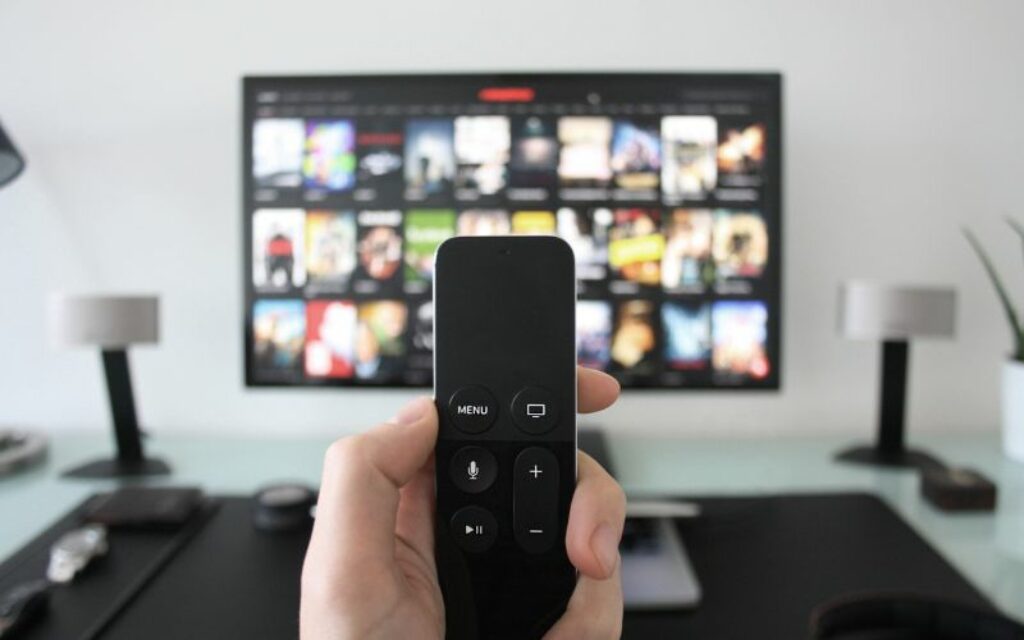Mounting a TV on the wall can transform your living space, offering a sleek and modern look while optimizing viewing angles. However, this seemingly straightforward task can quickly turn into a frustrating experience if not done correctly. It is important to know that hiring a professional is always smart and can avoid any of these common mistakes.
From improper measurements to inadequate cable management, there are several common mistakes that people make when trying to complete a tv installation on their own. It is important to know what can happen when you don’t hire a professional and learn how to avoid them for a successful TV mounting experience.

#Neglecting Proper Measurements:
One of the most common blunders is failing to measure accurately before mounting the TV. It’s crucial to determine the ideal height and viewing distance for optimal comfort. Consider the eye level when seated and ensure the TV is at a comfortable height. Ignoring this step can lead to neck strain and an uncomfortable viewing experience.
Solution: Use a tape measure to determine the desired height and mark the spot on the wall before drilling any holes. This prevents unnecessary adjustments later on.
#Ignoring Stud Placement:
Mounting a TV requires attaching it to wall studs for stability. A common mistake is ignoring stud placement and simply drilling into the drywall, which can result in an unstable TV mount.
Solution: Use a stud finder to locate wall studs. Secure the TV mount to at least two studs to ensure proper weight distribution and stability.
#Poor Cable Management:
Haphazardly hanging cables and cords detract from the clean look of a wall-mounted TV. Not planning for cable management can lead to a messy and unsightly appearance.
Solution: Consider using cable management solutions like cable raceways or in-wall cable kits to hide and organize cables behind the TV.
#Overlooking Wall Compatibility:
TV mounts are designed for specific wall types. Mounting a TV on a wall that isn’t compatible with the mount can lead to structural issues and an insecure installation.
Solution: Ensure that the TV mount is compatible with your wall type (drywall, concrete, brick, etc.) and follow the manufacturer’s guidelines for installation.
#Incorrectly Securing the TV:
Failing to secure the TV to the mount correctly can result in disastrous consequences. The last thing you want is your expensive TV crashing to the floor.
Solution: Double-check that the TV is securely attached to the mount, following the manufacturer’s instructions closely. Test its stability before leaving it unattended.
Also Read: How to Choose a TV for a Small Space
#Underestimating Weight Capacity:
Each TV mount has a weight capacity limit. Mounting a TV that exceeds this limit can damage the mount, the wall, or both.
Solution: Ensure that the TV’s weight is well within the limit specified by the TV mount’s manufacturer. This information can usually be found in the product documentation.
#Rushing the Process:
Mounting a TV requires patience and attention to detail. Rushing through the process can lead to mistakes and subpar results.
Solution: Take your time, read the instructions thoroughly, and follow each step carefully. Don’t hesitate to seek assistance if needed.
#Disregarding Stud Spacing:
The spacing between studs can vary. Ignoring this spacing can lead to misaligned holes and an uneven installation.
Solution: Measure the distance between studs accurately and adjust the TV mount’s position accordingly.
#Forgetting About Ventilation:
Placing a TV too close to the wall can restrict airflow, leading to overheating issues, especially with flat-screen TVs.
Solution: Leave some space between the TV and the wall to ensure proper ventilation and prevent overheating.
#Not Leveling the TV:
Mounting a TV crookedly can be visually jarring and affect your viewing experience.
Solution: Use a level to ensure that the TV is perfectly horizontal before securing it in place.
#Skipping Wall Anchors:
Inadequate support for the TV mount can cause it to sag over time, particularly on drywall.
Solution: If your TV mount’s instructions recommend using wall anchors, follow the instructions closely to provide the necessary support.
#Not Considering Future Adjustments:
Once a TV is mounted, you might realize that adjustments are necessary. Neglecting to choose a mount with tilting or swiveling capabilities can limit your flexibility.
Solution: If you anticipate needing to adjust the TV’s angle in the future, opt for a mount with tilt and swivel features.
Enlisting the expertise of a professional for TV mounting is an investment that ensures a seamless and safe installation process. While the prospect of a DIY project might be enticing, the intricacies involved in mounting a TV properly require a level of skill and knowledge that professionals bring to the table.
Professionals possess a deep understanding of wall structures, stud placement, weight distribution, and cable management, all of which contribute to the stability, aesthetics, and functionality of the installation. Their experience not only minimizes the risk of damaging your TV or walls but also guarantees that your TV is securely mounted, eliminating concerns about potential accidents.
Moreover, professionals can provide personalized advice on optimal viewing angles and height, tailoring the installation to your specific space. Ultimately, entrusting TV mounting to a professional ensures a polished and professional result, granting you peace of mind and allowing you to fully enjoy your entertainment experience without any worries.
Mounting a TV is a home improvement project that requires precision and careful consideration. By avoiding these common mistakes and following proper guidelines or hiring a professional, you can achieve a clean, secure, and visually pleasing installation.
Remember that patience and attention to detail are key to achieving a successful TV installation experience that enhances your viewing enjoyment and the aesthetic of your space. With the right approach, your wall-mounted TV can become a centerpiece that seamlessly blends functionality and style in your home.